
ColoringofPlastics——Fundamental-Application-Ma
正版书籍 高温消毒 放心购买 15点前订单当天发货 书名于图片不符时以图片为准
¥ 30.02 3.1折 ¥ 98 八五品
仅1件
广东东莞
认证卖家担保交易快速发货售后保障
作者Chen、Xinhua、Qiao、Hui、Xu 著
出版社化学工业出版社
出版时间2016-06
版次01
装帧平装
上书时间2024-06-16
- 店主推荐
- 最新上架
商品详情
- 品相描述:八五品
图书标准信息
- 作者 Chen、Xinhua、Qiao、Hui、Xu 著
- 出版社 化学工业出版社
- 出版时间 2016-06
- 版次 01
- ISBN 9787122265067
- 定价 98.00元
- 装帧 平装
- 开本 其他
- 纸张 其他
- 页数 406页
- 正文语种 英语
- 【内容简介】
- 无
- 【目录】
-
Chapter 1 Introduction of Plastics and Color / 1
1.1 Plastics1
1.1.1 Properties of Plastics1
1.1.2 Applications of Plastics3
1.1.3 Classification and Variety of Plastics3
1.1.4 Modified Plastics14
1.2 Coloring of Plastics14
1.2.1 The Meaning of Plastic Coloring14
1.2.2 Plastic Colorants16
1.2.3 Types and Properties of Plastic Colorant18
Chapter 2 Basic Requirements of Color Preparations / 22
2.1 Basic Requirements of Color Preparations22
2.1.1 Requirements of Colorant Based on Types of Plastic22
2.1.2 Requirements of Colorant Based on Plastic Molding Process24
2.1.3 Requirements of Colorant Based on the Application of Plastic26
2.1.4 Basic Requirements of the Plastic Colorant27
2.2 Color Performance29
2.2.1 Tinting Strength29
2.2.2 Saturation, Lightness, Hiding Power29
2.2.3 Dichroism30
2.3 Thermal Resistance31
2.3.1 Definition32
2.3.2 Concentration32
2.3.3 Chemical Structure, Crystal Modification, Particle Size33
2.3.4 Resins and Additives35
2.3.5 Applications36
2.4 Dispersion37
2.4.1 Impact on Dispersion of Pigment Surface Properties38
2.4.2 Impact on Dispersion of Particle Size and Distribution38
2.5 Migration39
2.5.1 The Main Reason for Migration39
2.5.2 Impact of Chemical Structure and Concentration on Migration40
2.5.3 Application of Migration Indicators41
2.5.4 New Application Requirements for Migration in Consumer Goods Regulations41
2.6 Light Fastness/ Weather Resistance42
2.6.1 Chemical Structure and Particle Size of Pigment43
2.6.2 Applications of Light Fastness (Weather Resistance) Indexes44
2.6.3 Difference Between Light Fastness (Weather Resistance) Index and Practical Applications47
2.7 Shrinkage/Warpage47
2.7.1 Effect Based on Crystallization48
2.7.2 Effect Based on Chemical Structure, Crystal Modification, Particle Size and Concentration of Pigment50
2.7.3 Application of Shrinkage/Warpage Index53
2.8 Chemical Stability53
2.8.1 Acid and Alkali Resistance53
2.8.2 Solvent Resistance54
2.8.3 Oxidation Resistance54
2.9 Security55
2.9.1 Acute Toxicity of Chemicals55
2.9.2 Organic Pigments Impurities55
2.9.3 Security of Double Chloride Benzidine Pigment56
2.9.4 Heavy Metal in Inorganic Pigments59
Chapter 3 Main Types and Properties of Inorganic Pigments and Specialty Effect Pigments / 61
3.1 Development History of Inorganic Pigments61
3.2 Classification and Composition of Inorganic Pigments63
3.2.1 Classification of Inorganic Pigments63
3.2.2 Composition of Inorganic Pigments63
3.3 Plastic Coloring Properties of Inorganic Pigment65
3.3.1 Requirements of Inorganic Pigment in Properties65
3.3.2 Impact of Inorganic Pigment Particle Characters on Coloring Properties66
3.3.3 Safety of Inorganic Pigments in Plastic Coloring69
3.4 Main Use of Inorganic Pigment in Plastics 70
3.4.1 Coloring for Plastics70
3.4.2 Special Functions71
3.5 The Main Varieties and Properties of Inorganic Pigments and Effect Pigments76
3.5.1 Achromatic Pigments76
3.5.2 The Main Varieties and Properties of Color Inorganic Pigment87
3.5.3 The Main Varieties and Properties of Effect Pigments (Inorganic)113
3.5.4 Main Varieties and Properties of Effect Pigments (Organic)124
Chapter 4 Main Types and Properties of Organic Pigments / 132
4.1 History of Organic Pigments132
4.2 Classification of Organic Pigments133
4.3 Importance of Organic Pigments in Plastics Coloring136
4.3.1 Differences Between Organic and Inorganic Pigments136
4.3.2 Difference of Organic Pigments and Solvent Dyes139
4.4 Relationship between Color Performance and Pigment Chemical Structure, Crystal Structure, Application Media141
4.5 Azo Pigment 142
4.5.1 Monoazo Pigment142
4.5.2 Disazo Pigments176
4.5.3 Disazo Condensation Pigments185
4.6 Phthalocyanine Pigments201
4.6.1 Blue phthalocyanine pigments202
4.6.2 Green Phthalocyanine Pigments206
4.7 Heterocyclic and Polycyclic Ketonic Pigments209
4.7.1 Dioxazine Pigments210
4.7.2 Quinacridone Pigments213
4.7.3 Perylene and Pyrene Ketone220
4.7.4 Anthraquinone and Anthraquinone Ketone Pigments227
4.7.5 Isoindolinone and Isoindoline Pigments231
4.7.6 Diketopyrrolo-pyrrolo Pigment237
4.7.7 Quinophthalone Pigments244
4.7.8 Metal Complex-based Pigments246
4.7.9 Thiazide Pigments248
4.7.10 Pteridine Pigments249
Chapter 5 Main Varieties and Properties of Solvent Dyestuffs / 252
5.1 Development History of Solvent Dyestuffs252
5.2 Types, Properties and Varieties of Solvent Dyestuffs253
5.3 Application Characteristics of Solvent Dyestuffs in Coloring of Plastics256
5.3.1 Solubility257
5.3.2 Sublimation258
5.3.3 Melting Point259
5.4 Market and Produce of Solvent Dyestuffs259
5.5 Main Varieties and Properties of Solvent Dyestuffs260
5.5.1 Anthraquinone Solvent Dyestuffs261
5.5.2 Heterocyclic Solvent Dyestuffs275
5.5.3 Methine Solvent Dyestuffs287
5.5.4 Azo Solvent Dyestuffs290
5.5.5 Azomethine Solvent Dyestuffs292
5.5.6 Phthalocyanine Solvent Dyestuffs294
Chapter 6 Plastic Colorants Inspection Method and Standard / 296
6.1 Inspection and Standard 296
6.1.1 Importance of Inspection296
6.1.2 Adopt International Standards, Improve Enterprise Competitiveness297
6.1.3 Quality Control Test and Application Performance Test298
6.1.4 Standards299
6.2 Quality Tests and Standards of Color Performance302
6.2.1 Composition of The Basic Mixtures of PVC303
6.2.2 Test of Color Performance304
6.2.3 Evaluation of Color Performance305
6.3 Evaluation of Color Stability to Heat During Processing of Coloring Materials in Plastics307
6.3.1 Evaluation by Injection Moulding (HG/4767.2—2014, EN BS 12877-2)307
6.3.2 Evaluation by Oven Test (HG/T 4767.3—2014, EN BS 12877-3)308
6.3.3 Evaluation by Two-roll Milling309
6.4 Standards and Methods of Assessment of Dispersibility in Plastics310
6.4.1 Evaluation by Two-roll Milling311
6.4.2 Evaluation by Filter Pressure Value Test (HG/T 4768.5—2014, EN BS 13900-5)312
6.4.3 Evaluation by Film Test( EN BS 13900-6)314
6.5 The Test Methods and Standard of Migration ( HG/T 4769.4—2014, EN BS 14469-4)315
6.6 The Test Methods and Standards of Light Fastness and Weather Resistance316
6.6.1 Sunlight Fastness and Weather Resistance Test317
6.6.2 Light Fastness to Artificial Light and Weather Resistance Tests320
6.7 Evaluation of Chemical Stability326
6.7.1 Test for Acid Resistance and Alkali Resistance326
6.7.2 Solvent Resistance Test327
6.8 Evaluation of Warpage and Deformability328
6.8.1 Evaluation of Degeneration or Shrinkage328
6.8.2 Evaluation of Warpage329
Chapter 7 Pigment Dispersion in Plastics / 331
7.1 The Purpose and Significance of Pigment Dispersion in Plastics331
7.1.1 Improving Pigment Coloring331
7.1.2 Meeting the Requirement of The Plastic Processing For The Pigment Dispersion332
7.2 Dispersion of Pigments in Plastic334
7.2.1 The Types and Properties of Particles Before Pigment Dispersion334
7.2.2 Dispersion of Pigment in Plastic336
7.3 Wetting338
7.3.1 Wetting Phenomena and its Evaluation Contact Angle and Young’s Equation338
7.3.2 Pigment Wetting339
7.3.3 The Judgment Basis of Pigment Surface Properties——Wetting Angle347
7.4 Pigment Dispersion348
7.5 The Dispersion Stability of Pigments350
7.5.1 The stabilization Mechanism of Double Electronic layer351
7.5.2 The stabilization Mechanism of Steric Hindrance354
7.6 Color Masterbatch and Pigment Preparation358
7.6.1 The Definition of Masterbatch358
7.6.2 Pigment Dispersion in the Color Masterbatch of Polyolefin359
7.6.3 The Jewel on the Crown of the Color Masterbatch Technology—Chemical Fiber Dyeing367
7.6.4 Pre-Dispersed Pigment Preparations for Plastics374
Chapter 8 Practical Technology and Quality Control of Color Matching for Plastics Coloring / 376
8.1 Basic Theory and Principles of Color Matching377
8.1.1 Basic Theory377
8.1.2 Basic Principles of Color Matching378
8.1.3 Color Matching for Plastics Coloring is a Complex Process379
8.2 Basic Knowledge That Color Matching Staff Should Have380
8.2.1 Comprehensive Understanding the Performance of Colorant380
8.2.2 Comprehensive Understanding the Performance of Plastics381
8.2.3 Fully Grasp the Process Conditions of Plastic Molding Process381
8.2.4 Fully Understand the Type of Plastic Processing Aids and Master the Content381
8.2.5 Comprehensive Understanding of the Safety Regulations of Plastic Products at Home and
Abroad382
8.3 Basic Steps of Color Matching382
8.3.1 Preparatory Work of Color Matching382
8.3.2 Specific Steps of Color Matching383
8.4 Quality Control389
8.4.1 Chromatic Aberration390
8.4.2 Quality Control of Formula Design394
8.4.3 Quality Control of Production394
8.4.4 Establish Quality Control System396
8.4.5 Problems and Solutions397
8.5 Practical Technology of Color Matching399
8.5.1 How to Formulate Special White Colorant for Plastic Coloring399
8.5.2 How to Formulate Special Black Colorant for Plastic Coloring400
8.5.3 How to Formulate Gray for Plastic Coloring400
8.5.4 How to Formulate Colorant for Outdoor Plastic Products401
8.5.5 How to Formulate Colorant for Transparent Products402
8.5.6 How to Formulate Pearlescent Colorant for Plastic Coloring403
8.5.7 How to Formulate Gold, Silver Colorant for Plastic Coloring404
8.5.8 How to Formulate Fluorescent Colorant for Plastic Coloring405
Reference / 406
点击展开
点击收起
相关推荐
— 没有更多了 —


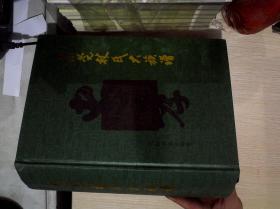
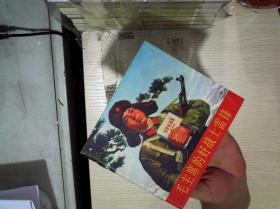
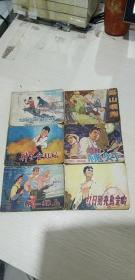
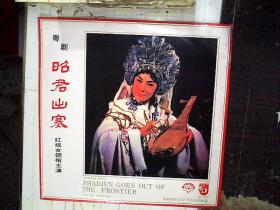
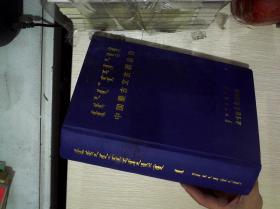
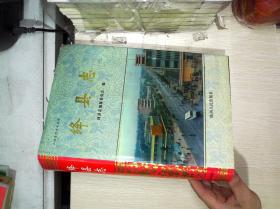
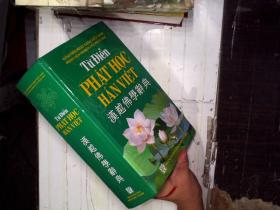

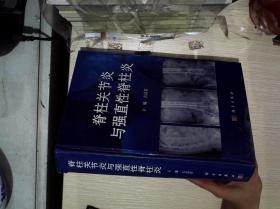




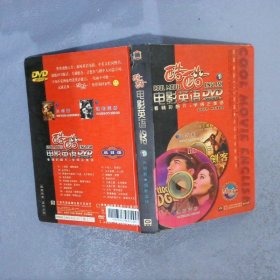








以下为对购买帮助不大的评价